Do Serie A teams invest in young talents or rely on accomplished players?
I created a squad profile for Serie A teams to understand the distribution of young talents and accomplished players across each position.
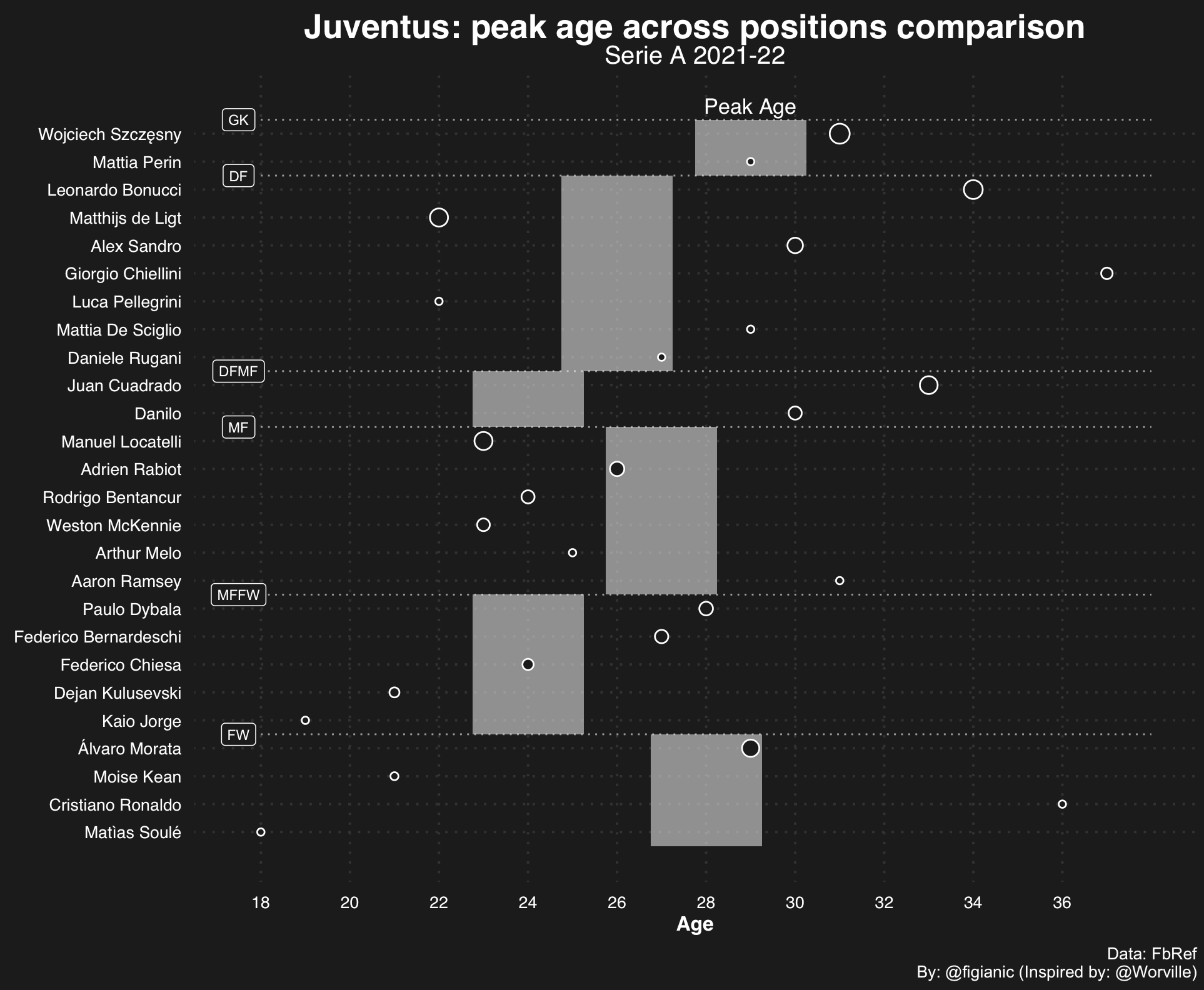
There's this conception that Serie A teams rely on accomplished, mature players rather than investing in the younger generation of players.
Serie A is inclined towards tactics rather than brute force or lightning pace, which is usually why Italian clubs sign older players, who have proved at the highest level for many years.
On top of that, young, strong players are generally more expensive to buy, and there aren't many Serie A sides who can afford them.
In a piece published on The Athletic, Tom Worville wrote an insightful article analysing how players' age impacts performances. He also provided an example of how Arsenal compares against the English Premier League peak age across each position.
Inspired by his work, I created a squad profile for Serie A teams to understand the players' age distribution across the league and the allocation of pre and post-peak age players.
Objective
Take into account Serie A data since 2010, and calculate the "peak age" for each position. The peak age identifies the moment when players are at their best, and it is generally different for each position.
It is typically higher for goalkeepers where the experience is preferred over freshness, and lower for wingers where the role requires lightning speed and more athleticism.
Interesting enough the peak age of 28 years for forwards, which is higher than its Premier League counterpart. This may be another indication of the more static, less paced Serie A game style.
| Position | Peak Age |
|---|---|
| Goalkeeper (GK) | 29 |
| Defender (DF) | 26 |
| Defender/Midfielder (DFMF) | 24 |
| Midfielder (MF) | 27 |
| Defender/Forward (DFFW) | 23 |
| Midfielder/Forward (MFFW) | 24 |
| Forward (FW) | 28 |
As pointed out in The Athletic's piece, there's no perfect way to identify the peak age. Both Expected Goal (xG) and OBV (On-Ball Value) models would only be relevant for players in possession of the ball, and they wouldn't make much sense for defenders and goalkeepers. For this reason, the minutes played by players is taken into account to compute the peak age.
Once we define the data time range, Serie A data since 2010, and the metric to track, we can then compare players of the current campaign (2021-22) against it.
And that's what I did for the top 5 Serie A sides (with an additional bonus at the end). Below, I compared the players' age with each position's peak age to understand the distribution of youngsters vs mature players. In which position do fully developed players feature? In which other role do skills spark instead? What are the older teams? And the one more prone to invest in youthful players?
Team Analysis
Inter Milan
Inter are, on average, the oldest team in Serie A. This comes on the back of their recent league title success under Antonio Conte, and it's common knowledge that the Apulian manager prefers accomplished players who have seen-it-all and can adapt quickly to his demanding football style.
The points in the chart are plotted to highlight players who've been playing more in the current season: The bigger the dot, the more minutes the player was given.
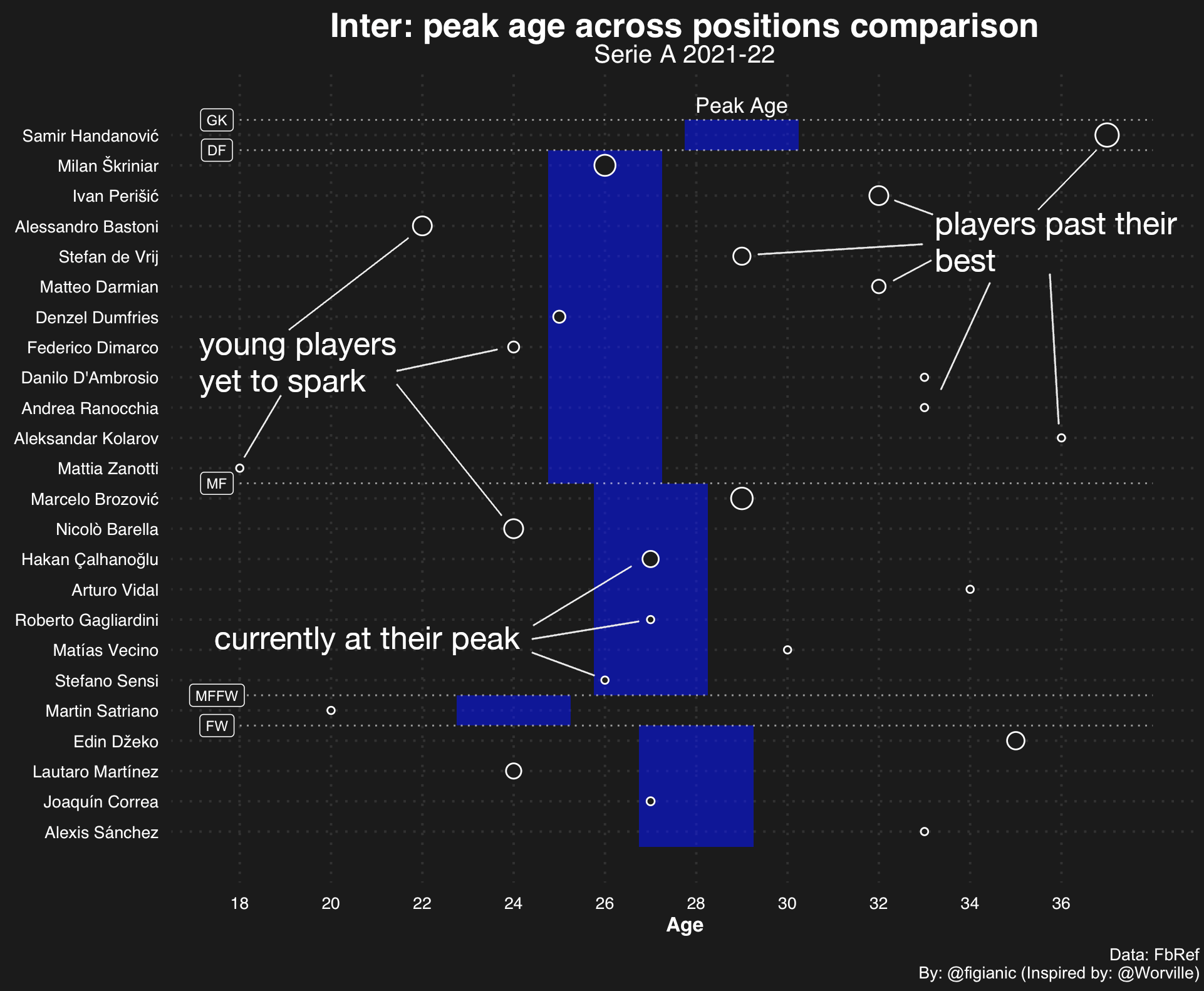
Most players of the ideal starting XI are beyond their peak age, with Alessandro Bastoni, Nicolò Barella and Lautaro Martinez the only exceptions to get consistent game time.
One in each position, and this is not a coincidence. The three Nerazzurri bring freshness to an otherwise mature side, and they will likely be the framework Simone Inzaghi will rely on.
Even the players who joined Inter Milan in the latest transfer window don't seem to be young players with a long future ahead. Instead, they are players currently in their peak age like Denzel Dumfries, Joaquin Correa and Hakan Çalhanoglu or footballers that are past their best, like Edin Džeko who's 35.
Overall Inter Milan successfully merged young players, whose value is getting bigger and bigger, with veterans. With older players in goal (Samir Handanovic) and in attack (Džeko), they also reflect the Serie A average peak age across each position quite well.
AC Milan
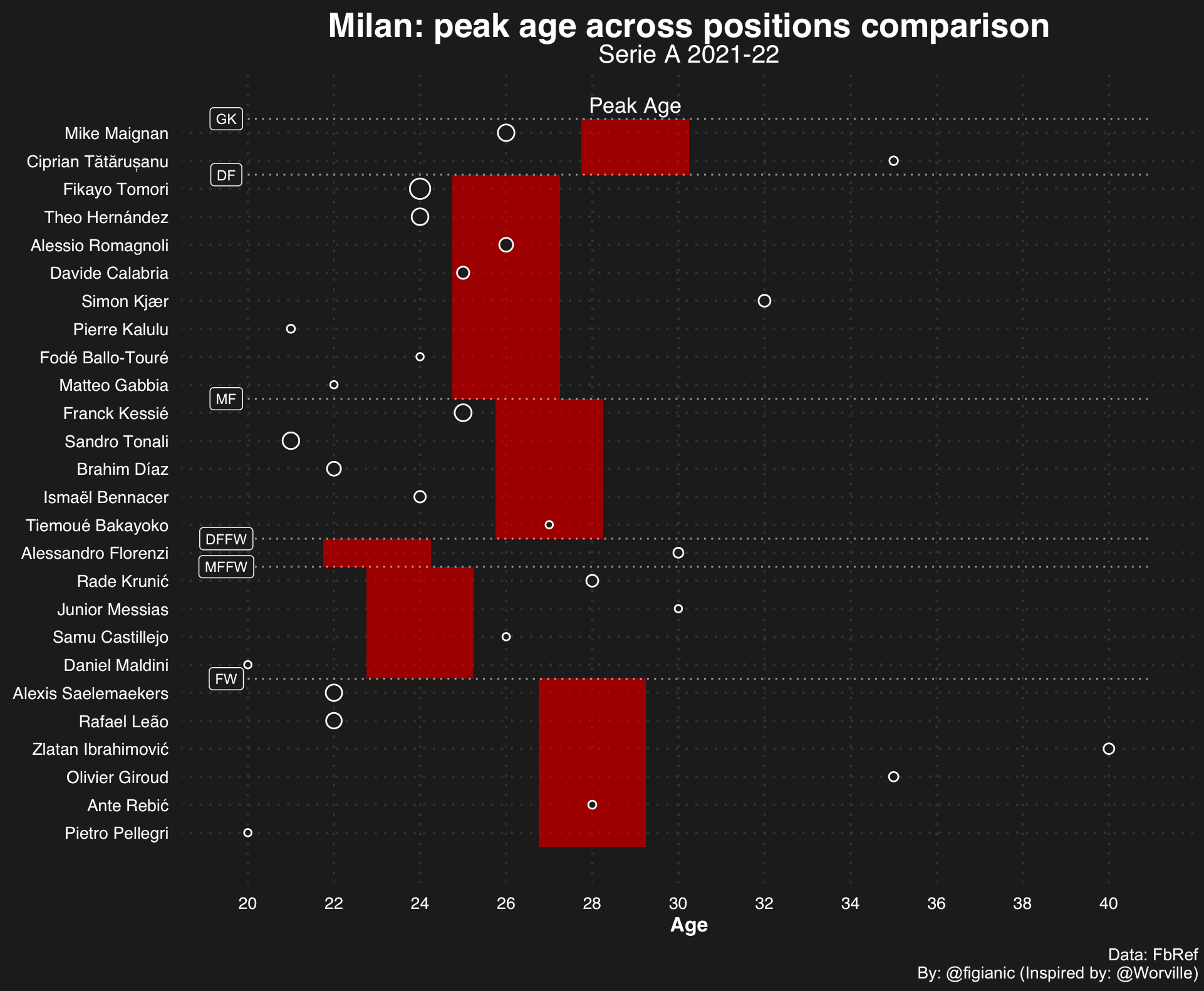
The Rossoneri are a positive example of a club that meaningfully invested in young players after a few spells of management shortsightedness. They managed to replace Gianluigi Donnarumma with a young, promising substitute, Mike Maignan, and bring in other young players without spending a fortune.
Fikayo Tomori, Theo Hernandez, Franck Kessie, Sandro Tonali, Alexis Saelemaekers and Rafael Leo are the most prominent examples. There are bright days ahead for AC Milan across each position.
However, the main question mark for the Rossoneri is how they can successfully replace Zlatan Ibrahimović, who is 40. From Gonzalo Higuain to Krzysztof Piatek, André Silva and Nikola Kalinić too many number nines showed up at Milanello without making an impact and moved on shortly after.
No one was able to turn AC Milan's attacking fortune around until Zlatan came back. Granted, the Swedish international is hard to replace, but he's not eternal. Olivier Giroud (35), despite being a valid temporary workaround, doesn't look like a long-term solution.
Napoli
The Azzurri started the 2021-22 campaign stronger than ever, winning eight games in a row and collecting 31 points in the first 11 games. Only recently, they've started to stutter with only two wins in the last eight games. Is it due to the packed calendar and their short bench taking the toll?
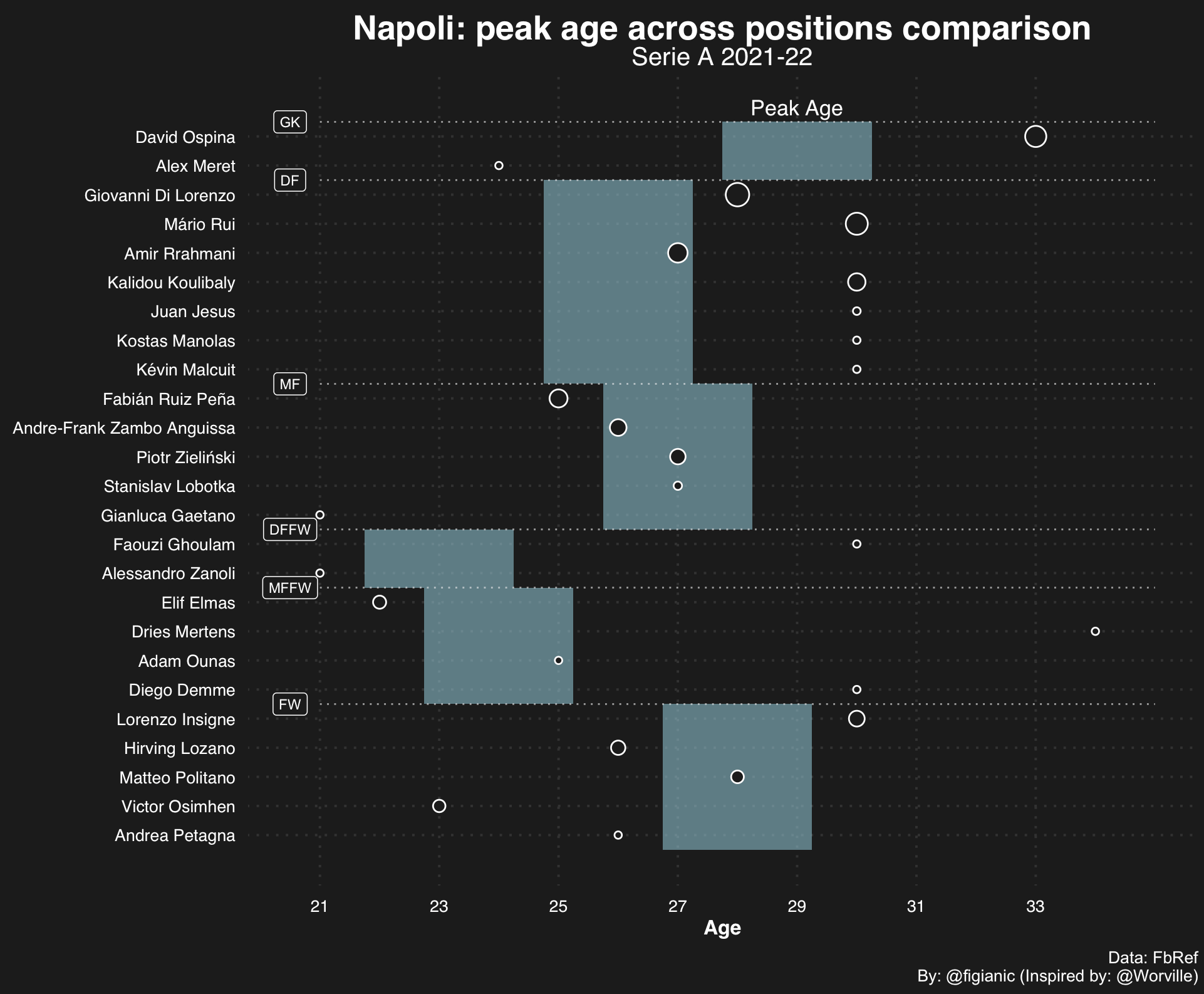
By considering Napoli's peak age comparison, it's clear that they value experience over everything else in defence. Their first-choice goalkeeper and all the defenders are past their peak age. This appears to be a common theme in Serie A sides.
Fabian Ruiz and Elif Elmas are the only pre-peak age midfielders. In terms of bringing more freshness, the recent additions of Hirving Lozano, Andrea Petagna, and Victor Osimhen are promising and offer a solid baseline for the days ahead.
Atalanta
"La Dea" is often referred to as a positive example of a fresh and innovative environment that succeeds locally and surprises the European stage.
That's why the chart below came as a surprise to me.
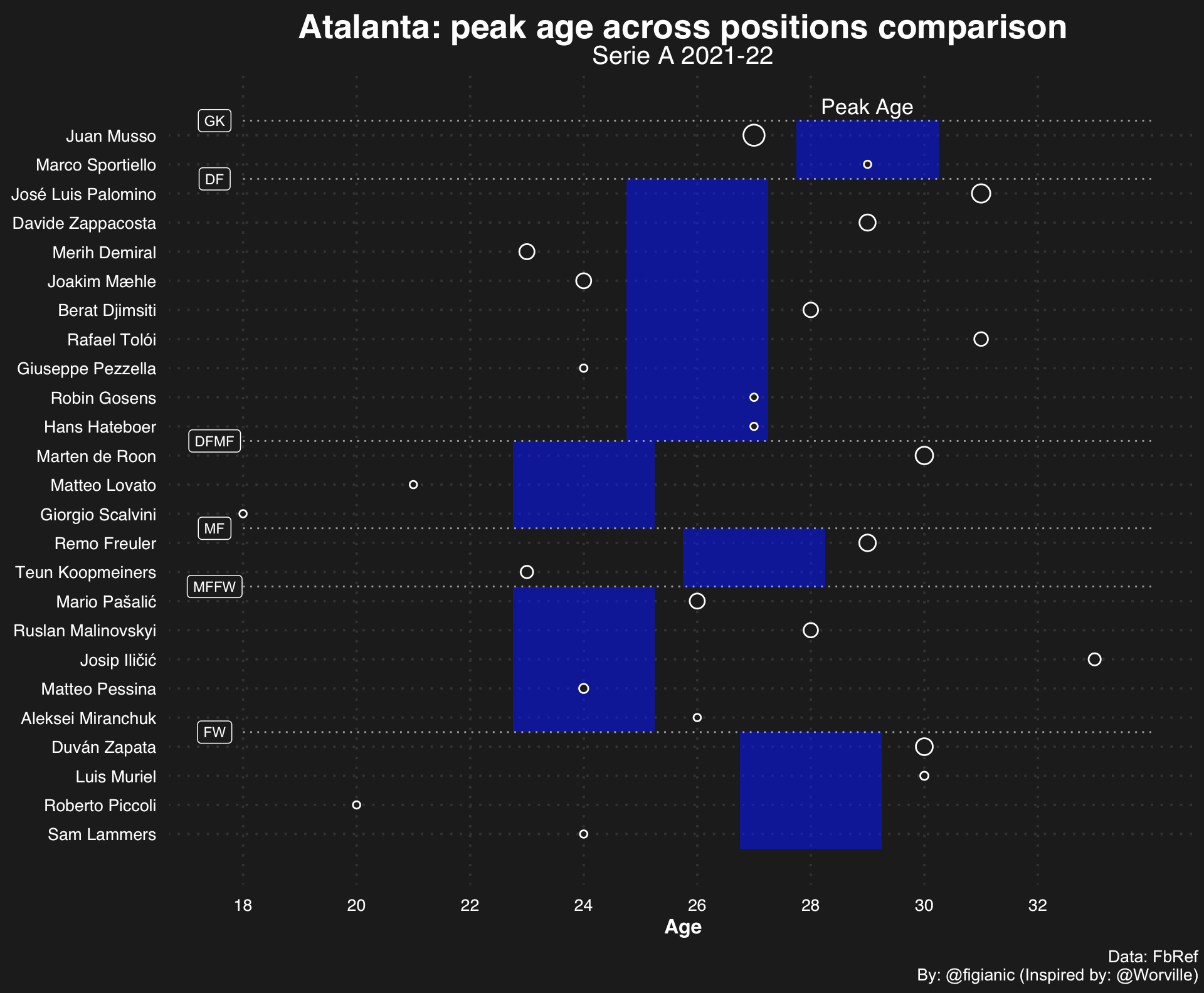
When you think about Atalanta, you think about fast, hungry players masterfully managed by Giampiero Gasperini. A beauty to watch most of the time.
Are Atalanta's players such well organised, eager to connect and skilful that you would normally assume they're relatively young? Well, the data says something slightly different.
It's only Merih Demiral, who joined Atalanta just a few months ago, and Joakim Mæhle, who are yet to reach their peak. All the other players across each position are past their best days.
This makes you wonder one more time how many seasons can the Nerazzurri's core players (Josè Luis Palomino, Martin De Roon, Remo Freuleer, Mario Pašalič, Josip Iličić, Luis Muriel and Duvan Zapata) sustain a high level competition like the Italian league. Is this going to be one of their last few opportunities to shine?
Interestingly, despite being beyond their peak, Atalanta players are not too far from it, and they are, on average, only 0.48 years past their peak age (more on this later).
Juventus
There are growing concerns about Juve's management and their ability to innovate and invest in promising players rather than target accomplished high paid players. I've put some more thoughts on this in one of my previous posts.
Surprisingly, there's a decent number of young players, pre-peak age, across midfield and attack. And recent additions seem to go in the right direction of investing in the younger generation.

However, they're not earning many chances to shine since they're at the bottom of the pecking order and only getting a limited game time. Considered together, Moise Kean (500 minutes played), Kaio Jorge (121 min), Dejan Kulusevski (657 min) and Arthur Melo (244 min) have collected an average of 95 minutes of game time out of the 19 games played so far. That's not much.
There's a disconnection between the willingness to rejuvenate the squad and the manager, Massimiliano Allegri, who seems to prefer players who are more acquainted with the Serie A league. Alex Sandro over Luca Pellegrini, Federico Bernardeschi over Kulusevki and Alvaro Morata over Jorge and Kean are just a few examples.
In defence, Matthijs De Ligt is the only pre-peak player to play consistently game after game. Nonetheless, some rumours linked the Dutch international to a possible move to the Premier League.
In addition, Juve made some attempts to replace their historic defensive duo, Giorgio Chiellini (37 years old) and Leonardo Bonucci (34). However, they all failed. The likes of Merih Demiral, Cristian Romero and Mattia Caldara briefly joined Juventus before being sold shortly after. And Daniele Rugani is always missing that something special to become a starter. The conundrum of finding a replacement for the two Italian defenders is still a dilemma.
Italy national team (Bonus)
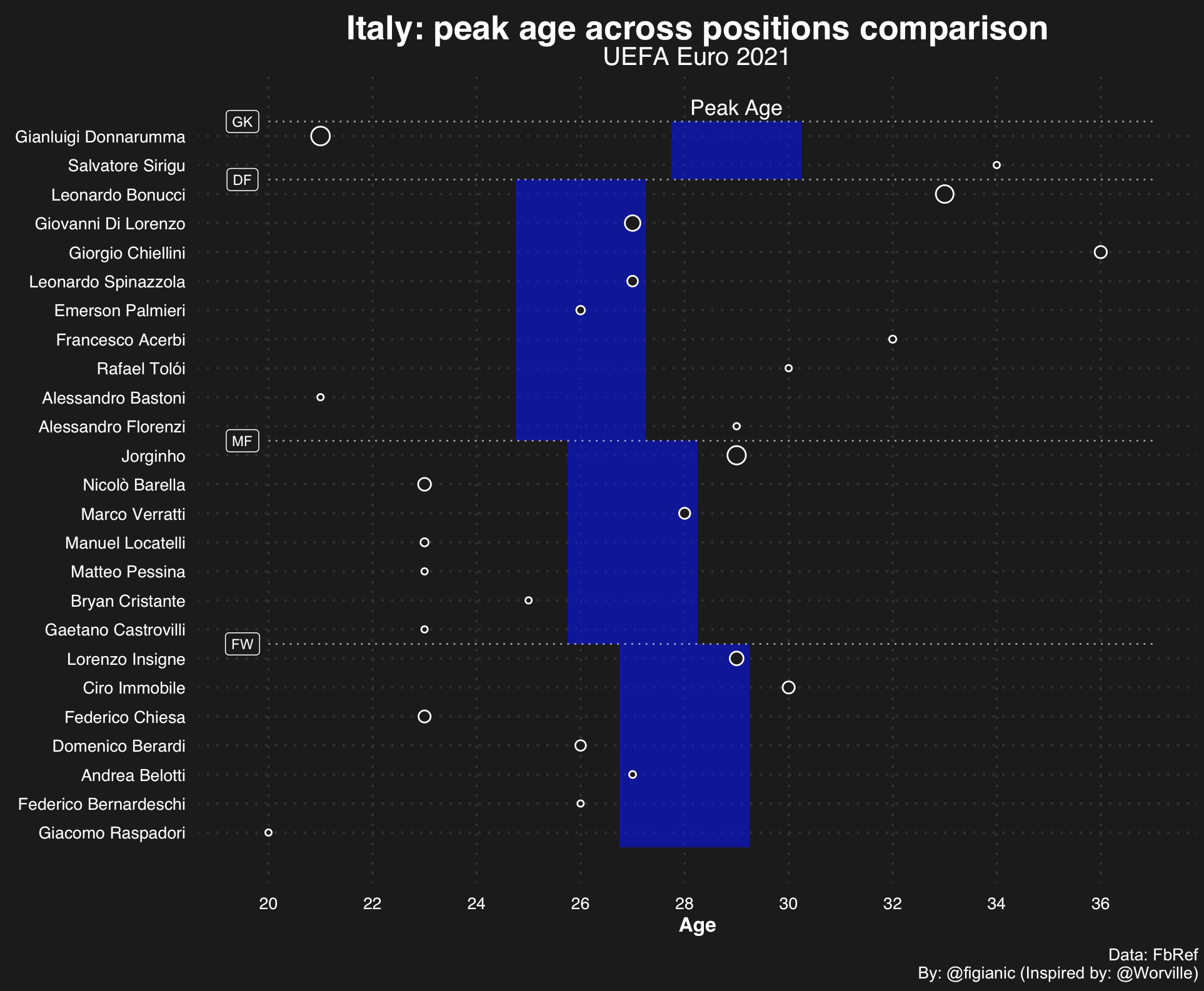
Above is the peak age diagram of the Italian national side that won UEFA Euro 2021. Of course, taking into account the players' age of Euro 2021 sides would lead to a different model and stats. So, comparing Serie A data with events from a different competition is a bit of a stretch. However, in this case, the purpose was to provide an insight into how the national team compare against the league average values. Considering all the limitations, it still kinda makes sense.
And the pattern we saw across the Serie A is confirmed: more mature players are preferred in defence, with the only exception of the keeper Gianluigi Donnarumma, and more pre-peak players featuring for Italy in midfield and attack.
Conclusion
How far is each team from the average Serie A peak age? The answer to this question is plotted below. The graph simply considers the difference between the peak age and players' age across each position. At this stage, the game time of the players is not taken into account.
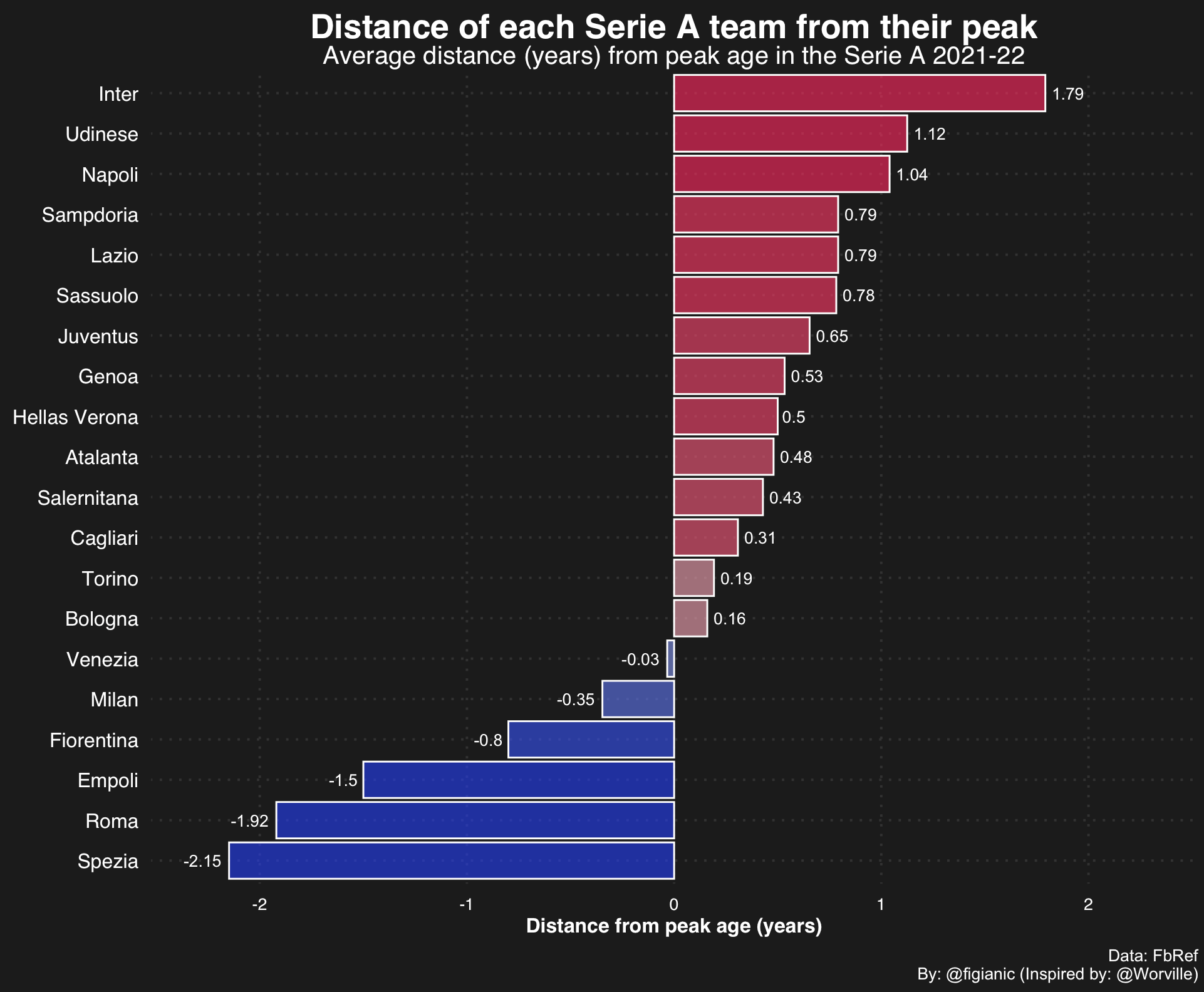
It's clear that Serie A sides tend to rely on more mature players in general. Most of the teams (14 out of 20) are on average older than the peak age, with the champions (yes, it's not a coincidence) Inter Milan, the oldest team by a considerable margin. Only six teams are on average younger than the Serie A peak age and out of these only AC Milan are in a top-four spot.
We've already mentioned how Inter Milan are the oldest team according to what was discussed above, with Samir Handanovic a strong contributor.
Juventus are, on average, 0.65 years older than the ideal peak age. Again, this doesn't look too bad but, currently, the younger players are struggling to make an impact and be consistent.
AC Milan, currently second in the league, are slightly younger than the peak age. They're the only pre-peak team comfortably sitting near the top of the table and a serious contender to the title. And this becomes even more remarkable if we consider that Zlatan Ibrahimović is 40 years old.
With only three past-peak players, Spezia are the youngest team in Serie A. The oldest player in the squad, Jeroen Zoet, being 31 years old. Roma is another countertrend with many youngsters being picked, especially in defence, by Jose Mourinho.
Do you have more chances of winning the league with accomplished players who are more acquainted with the game then? It's hard to say, but it is often said that the team with the best defence is the one to win the Serie A title. It's probably for this reason that most of the teams rely on fully developed past-peak defenders, with AC Milan (again) and Roma the only few exceptions. The Italian national team that won UEFA Euro 2021 confirms this trend.
Sure there are many components like wealth, environment, identity, time to value, etc..to consider, but, in general, it seems Serie A is better suited for mature, accomplished players who proved their value in previous seasons or foreign leagues.

